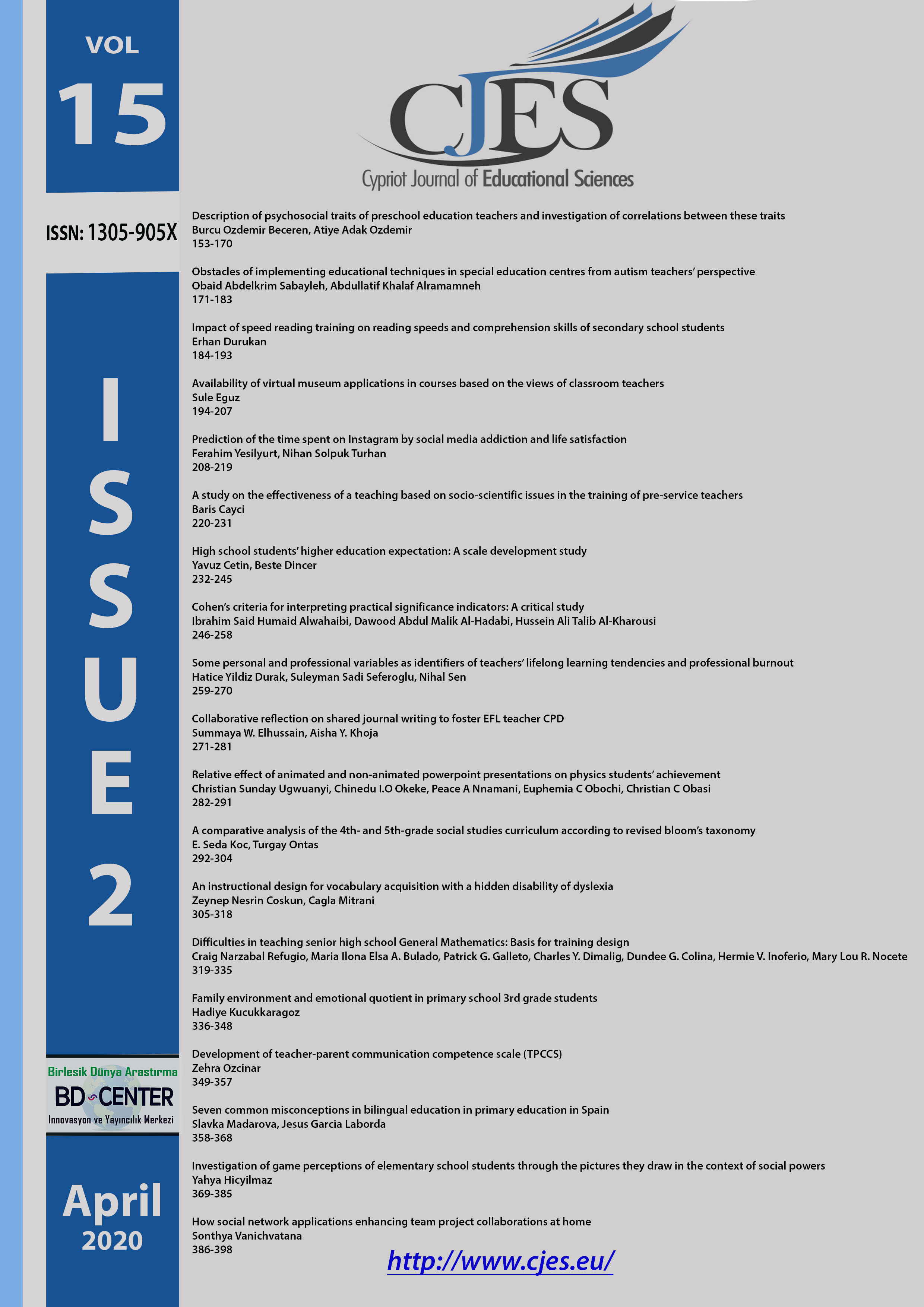High school students’ higher education expectation: A scale development study
Main Article Content
Abstract
The aim of this study is to develop a valid and a reliable scale to determine the expectations of high school students from higher education. The population of the study consisted of 315 high school students in the 2018–2019 academic years. To test the construct validity of the scale, exploratory factor analysis and confirmatory factor analysis were used. The original five-point Likert scale composed of 22 items with five subdimensions. The results showed that the internal consistency coefficient of the scale was calculated as 0.84. The scale factor load values ranged between 0.58 and 0.81, and the rotated factor load values ranged between 0.46 and 0.81 and explained 59.1% of the total variance of the scale. The higher education expectation scale can be used not only to evaluate the students’ future and professional expectations in terms of subjective norms but also goal setting and need for the analysis of the program development studies.
Keywords: High school students, expectation, scale development.
Downloads
Article Details

This work is licensed under a Creative Commons Attribution 4.0 International License.
Cypriot Journal of Educational Sciences is an Open Access Journal. The copyright holder is the author/s. Licensee Birlesik Dunya Yenilik Arastirma ve Yayincilik Merkezi, North Nicosia, Cyprus. All articles can be downloaded free of charge. Articles published in the Journal are Open-Access articles distributed under a CC-BY license [Attribution 4.0 International (CC BY 4.0)].
Birlesik Dunya Yenilik Arastirma ve Yayincilik Merkezi (BD-Center)is a gold open-access publisher. At the point of publication, all articles from our portfolio of journals are immediately and permanently accessible online free of charge. BD-Center articles are published under the CC-BY license [Attribution 4.0 International (CC BY 4.0)], which permits unrestricted use, distribution, and reproduction in any medium, provided the original authors and the source are credited.

